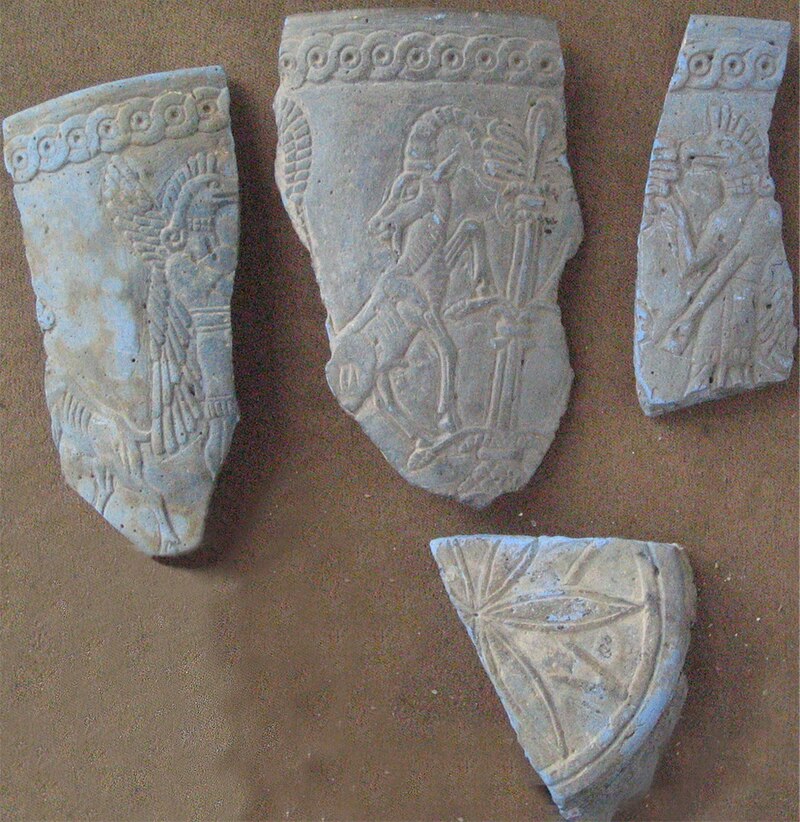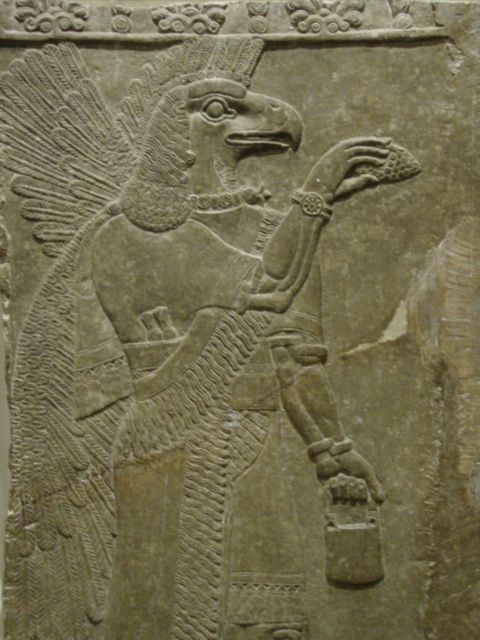[credit: Assyrian International News Agency] The Dark Tale behind the Golden Bowl of Hasanlu | 9 September, 2014 | 02:50 | aprilholloway
Posted on 03/30/2019 12:04:03 AM PDT by SunkenCiv
Hasanlu developed into a significant commercial and production center during the early Iron Age (1400-800 B.C.), owing to its location on important trade and communication routes between Mesopotamia and Anatolia. The citadel at the center of the settlement contained an array of monumental buildings, including palaces, temples, and large multi-columned halls. The evidence Danti is studying confirms that the citadel met with a violent end. Many buildings were ransacked and burned, which caused them to collapse. In addition, the remains of more than 250 people were uncovered, some with signs of systematic execution. "The horrific level of violence evident in the archaeological record left a mark on everyone who excavated the citadel," Danti adds. "Hasanlu's destruction level makes it a giant ninth-century B.C. crime scene." According to Danti's analysis of the Gold Bowl's context, the valuable object was in the process of being looted by enemy combatants. The three soldiers, who, based on their military equipment and personal ornaments, probably hailed from the Urartu region north of Iran in modern Armenia, were in the process of plundering a wealthy, multistory complex as the citadel burned. They located the bowl and other valuables in a second-story storeroom. As they fled with their prize, the mud-brick building suddenly collapsed. The invaders were hurled to the floor below, where they were crushed by debris, and lay buried, side-by-side -- thieves and their trophy -- for nearly three millennia.
(Excerpt) Read more at archaeology.org ...
[credit: Assyrian International News Agency] The Dark Tale behind the Golden Bowl of Hasanlu | 9 September, 2014 | 02:50 | aprilholloway
The bowl is amazing.
Who were the residents? Who were the invaders?
The perps were Urartians, the builders of the town, it just says it was on a trade route, so, a group of industrious entrepreneurs who were too busy working to go out and carve out a few pages in the history books. :^)
Beautiful.
You know what I see in a lot of those artifacts? Bottle openers.
Makes a guy wonder, it surely does.
Imagine, it's not unlikely that, had the plundering gone as planned, we'd never have seen it.
I have a feeling that this will turn out to be “one of *those* topics”, and get a yellow ping from the C list.
What keeps drawing my eye is the chair or throne or whatever it is that looks like it’s scaled with the three heads of whatever creature that is turned and looking at its back with the guy reaching out to the other guy that looks like he has mits or gloves of some sort on his hands.
I’m wondering what that is supposed to be.
The bowl’s repoussé and chased decoration depicts several complex figural scenes, mostly mythological. The origin and precise meaning of the pictorial scenes have been the subject of scholarly debate. No written language is preserved from Hasanlu and archaeologists have yet to identify the ethnic background of the site’s inhabitants. Various interpretations of the mythological scenes place their origins in Urartian, Hurrian, and/or Indo-European traditions
So, ok then.
It’s the Hydra’s woodchipper that the one guy is being fed into, and the other guy is the Puncher of Escape Attempters.
Solved it.

That places it top left hand corner of map, on shore of the small lake URMIA
Shown within Iran Location West Azarbaijan, Iran

Attributed to Hasanlu Tepe, the above artifact appears to be typically Sumerian, as below. The lamb or goat in a thicket is from UR.

Teppe Hasanlu or Tappeh Hassanlu (Persian: is an archeological site of an ancient city[1] located in northwest Iran (in the province of West Azerbaijan), a short distance south of Lake Urmia. The nature of its destruction at the end of the 9th century BC essentially froze one layer of the city in time, providing researchers with extremely well preserved buildings, artifacts, and skeletal remains...

It seems that broken artifact existed at Hasanlu Tepe for a millennia after UR was destroyed, or UR and Hasanlu shared a common religion/mythos.
2113 - 2095 BC - Ur-Nammu, the first king of the 3rd Dynasty of Ur, who revived the empire of Sumer and Akkad, won control of the outlet to the sea about 2100 BC and made Ur the wealthiest city in Mesopotamia. His reign marked the beginning of the so-called renaissance of Sumerian art and literature at Ur. The descendants of Ur-Nammu continued in power for more than a century, or until shortly before 2000 BC, when the Elamites captured Ibbi-Sin (reigned 2029-2004 BC), king of Ur, and destroyed the city.
Thanks FN!
Disclaimer: Opinions posted on Free Republic are those of the individual posters and do not necessarily represent the opinion of Free Republic or its management. All materials posted herein are protected by copyright law and the exemption for fair use of copyrighted works.